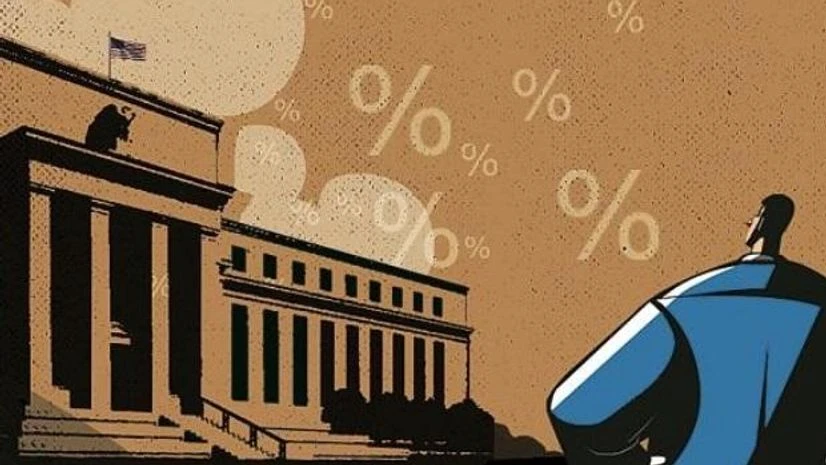In their deliberations on monetary policy, Federal Reserve policymakers need to consider many factors, but up to now, climate change has not been one of them.
But as worries about the warming planet increase, the US central bank is taking a closer look at the economic impacts of higher temperatures, more frequent severe weather, and rising sea levels.
A "green interest rate" is one of the ideas on view Friday as the San Francisco Fed convenes the US central bank's first-ever conference on climate change and economics. The event is so oversubscribed a webcast has been created to meet demand.
While the Fed lags central banking peers such as the Bank of England in making climate change an explicit part of its financial stability remit, the conference is the latest sign the Fed has started to take the risks and costs of global warming seriously.
"It's important for us from a monetary policy perspective to know what the potential growth rate of the economy is and if climate events or climate risk is going to shave that off, even if it's over the long term," San Francisco Fed chief Mary Daly said in New York earlier this week.
Also Read
Papers to be presented at this week's conference provide that perspective in a range of ways. One estimates climate change could subtract 7% from real world per capita GDP by 2100; another finds that subsidies for green energy like wind and solar are not an effective tool against global warming, but carbon taxes, if implemented in many parts of the world, would be. Others papers map out how climate change affects asset prices and show trade policy subsidizes greenhouse gas emissions.
The US central bank is focusing more intently on global warming, even as President Donald Trump's administration denies it exists. Trump, who has called climate change a "hoax," on Monday officially notified the United Nations that the United States will in 12 months leave the Paris Climate Accord, under which 195 nations agreed to reduce greenhouse gas emissions in a bid to prevent catastrophic planetary warming.
Scientists are in broad agreement that carbon dioxide from cars, power plants and other human sources are behind the climate change that's already making powerful hurricanes, severe drought, and other weather extremes more frequent.
Already the target of Trump's ire for not lowering interest rates even more than he already has, Fed Chair Jerome Powell said recently that central banks are working out how directly they should confront climate change.
"We are not in a place where I think we would conduct monetary policy in order to deal with climate change type issues," Powell said last month in Denver, "but there's a lot of forward-thinking analysis going on."
Powell won't be at Friday's conference, but Lael Brainard, one of five Fed governors who sets US interest rates along with the Fed's 12 regional bank presidents, will be.
She is no stranger to the ideas presented at Friday's conference: more than a decade ago she helped edit a book about the economic threat of climate change. But since her appointment by President Barack Obama in 2014, she has said little about the issue.
CAN INTEREST RATES BE GREEN?
For some economists, it makes sense for the Fed to consider how climate change might affect growth in the same way it would look at other, potentially longer-term issues such as demographic trends.
At the conference, Carnegie Mellon University professor Nicholas Muller will outline a "green interest rate." Simply put, he suggests interest-rate setting should take into account the economic drag that greenhouse gas emissions are projected to cause.
"Rates should be lower when pollution damages are rising," Muller said in an interview. His paper also shows how judicious use of rate policy can skew investment in ways that could aid environmental goals and save human lives.
While that idea may be a step too far for the foreseeable future, the Fed has in the past year produced an extraordinary amount of research on climate change and economics.
The Dallas Fed devoted much of a recent quarterly publication to climate change, including an analysis of carbon emissions in the state of Texas.
The Richmond Fed last month addressed the question of central banks and climate change in its own quarterly publication. The San Francisco Fed two weeks ago published a 168-page report on the impact of severe weather on poor communities and floated a range of responses, including discouraging banks from lending to rebuild in disaster-hit areas that fail to take steps to reduce future risk.
Even so, the Fed is still far behind other major central banks, and some of the research to be presented at the upcoming conference suggests why that could be problematic.
"While economists are still debating whether global warming affects the level or the growth rate of the economy, ignoring these effects could potentially lead central banks to misjudge the evolution of the output gap and inflationary pressure," Bank of England researcher Sandra Batten notes in her presentation.
Nigel Purvis, co-founder of the advocacy group Climate Advisers, who worked with Brainard to edit "Climate Change and Global Poverty" and won't be at the conference, is more blunt.
"Climate change creates material risks for US financial institutions and by extension the entire US economy," Purvis said in an email. "Other financial regulators, including the Bank of England, are climate proofing their financial sectors by requiring climate disclosures and more active management of climate risks. The Fed should do the same."

)
